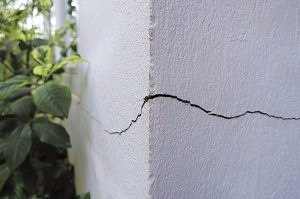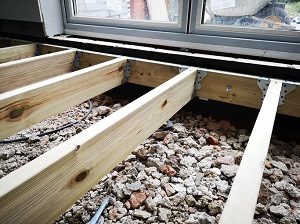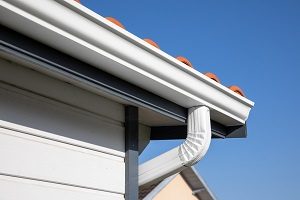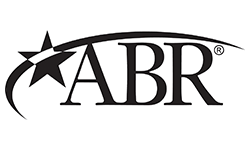Buyers may balk at lengthy inspection reports, but not every item is an emergency. Know what may—and may not—be cause for alarm.

The results of a home inspection can make or break a home sale, particularly if buyers are unsure about the items flagged in the report. They may panic at the sight of a long laundry list of repairs.
“No home is perfect,” says Adam Long, president of HomeTeam Inspection Service, which has more than 200 offices nationwide. “Every home has some safety concerns or issues that may need to be resolved—some right away, some later on. But at the end of the day, every home has issues, and every issue is fixable. It’s up to the buyer, seller and agents to decide what to do about it.”
A home inspection provides a visual review of the home’s structure and its key components, including the plumbing and electrical systems. Home inspectors provide a written summary of the inspection and should inform and explain to a client everything they find and respond to any questions, Long says. “They are not there to scare a home buyer,” he adds. “Some items they may find need to be replaced, budgeted for replacement later on or may be used to renegotiate on the price.”
Deciphering Potential Red Flags
These larger inspection items may alarm buyers, but there may be no reason for concern.

Structural or Foundation Issues
A home that is starting to move or settle incorrectly could cause major issues later on. A home inspector will look for any signs of structural issues, noting even seemingly minor hairline cracks in the concrete slab or on the interior walls. “They may tell you to just watch it to make sure it doesn’t get bigger or expand,” Long says. “But if it’s a horizontal crack with a bulge, they may advise you to get it reviewed right away by a foundation expert.”
Inspectors also may flag issues like misaligned or sticking doors and windows, as well as sagging or slanting floors, which could indicate a possible foundation issue. By being proactive about foundation problems, homeowners may be able to avoid costlier issues later on. For example, repairing minor cracks can cost as little as $500, but more extensive foundation repairs can stretch to $10,000 or higher, according to HomeAdvisor’s 2023 cost data.
Price: The national average for a foundation repair is $2,175–$7,823, but costs can vary widely depending on damage.

Aluminum Wiring
A home inspector likely will identify whether aluminum wiring, which is mostly found in homes built between 1965 and 1973, is present. Homes today are wired using copper, and aluminum wiring has been found to deteriorate faster than copper. Aluminum is prone to overheating, which could create a fire hazard. “People who have lived in a home for 50 years, or those who didn’t get a home inspection in prior moves, may not even know they have it,” Long says. “It doesn’t mean a home will catch on fire, but it increases the odds.”
Also, many insurance companies will not insure a home with aluminum wiring present. Therefore, inspectors may advise buyers to talk with their insurance agent. Rewiring a home can be expensive, but buyers could explore other possible solutions, like the use of specialized connectors or applications, to make aluminum wiring safer.
Price: The national average for rewiring a house is $16,000.

Dated Electrical Panels
Home inspectors will scrutinize electrical panels, where all the wires in the home come together and are distributed. A common issue they spot is when two branch circuit wires are connected to the same breaker—there’s supposed to be only one—which can cause a breaker to trip frequently. “That can be a simple fix,” Long says.
Inspectors also will look at the type of panel installed and may recommend replacement. For example, older Zinsco and Federal Pacific electrical panels, which were installed from the 1950s to 1980s, have been linked to fire hazards from circuit breakers failing over time. Some insurance companies may not insure homes with these panels.
Price: The national average for replacing and installing an electrical panel is $2,400.

Plumbing Issues
Inspectors may note minor to major items regarding the home’s plumbing. “Most with plumbing are minor, like from a hose not being tightened or a leaky faucet,” Long says. “It’s not a red flag, but they’re important because you don’t want a small leak to become a bigger leak and then, later on, even lead to mold.” Long says inspectors also may flag the presence of “Polybutylene Plastic” supply pipes, which were commonly used between 1978 and 1994. They are prone to higher rates of leaks or plumbing line failures compared to more modern piping materials.
Inspectors likely will note the presence of PB pipes as well as cast iron and galvanized piping, which are prone to corrosion. The presence of these pipes don’t necessarily warrant replacement, Long says, but home buyers will need to make that decision. “These are not used in modern homes but older homes,” Long says. Copper is used today and has a longer life cycle than some other materials that homeowners may need to consider replacing after 40 or 60 years, he adds.
Price: The national average for replacing plumbing supply pipes is $1,500 to $15,000, depending on the home’s size and type of pipes installed.

Floor Joists
Many homes have wooden tresses in the attic or wooden floor joists. Home inspectors will indicate any rotted wood in these areas. They’ll also note if the homeowner has done anything to the wooden tresses or floor joists that could potentially jeopardize the stability of the home. Homeowners and remodelers may cut into the floor joists—horizontal structures between beams that help distribute the weight of the home—when installing plumbing. “They may think it’s OK to just cut a little notch from the wood, but the floor joists provide support,” Long says. Later on, that could lead to wall cracks, unstable or sloping floors and structural damage.
Price: The national average for repairing floor joists is $12,500, but costs vary based on the extent of the damage and type of joist. Expect to pay $100 to $2,000 per joist.

HVAC Systems
Many homes are fueled by natural gas, and inspectors will evaluate the heat exchanger and the color of the flame, like whether it’s yellowish red or blue. “If it’s non-blue, it could indicate a bad ratio between fuel and air,” Long says, indicating a possible sign of a cracked heat exchanger. That could lead to a furnace that stops eventually working or even a replacement needed or even a possible carbon monoxide leak.
Price: The national average for an HVAC replacement is $5,000 to $12,000.

Safety Issues
Inspectors look for potential safety issues in a home and will flag anything they spot, even if it’s relatively minor. “Home inspectors are looking for tripping hazards, from cracks in a driveway or the steps into the house to missing or loose handrails,” Long says. “They will report these, but they’re usually fairly easy to fix. These are not going to cause a fire or flood, but they could cause injuries in a home.” Inspectors also will document the presence of smoke alarms and carbon monoxide detectors. “Many older homes, especially, may have no carbon monoxide detectors or are missing the right amount of smoke detectors” to comply with today’s building codes, Long says.

Drainage Spots
Outside, home inspectors will scrutinize not only the roof but also the home’s drainage systems. They’ll check whether the water is flowing away from the foundation, basement or crawl space. They’ll look for improper gutters, or those that may be overflowing and not large enough for the home’s roof. “Gutters direct water away from the foundation,” Long says. “If a gutter is feeding water out and back toward the home, there may need to be some kind of pipe to keep it away from the house.”
Too often, Long says, he’ll spot issues where homeowners have added landscaping that inadvertently redirects water toward the foundation. Over time, that can cause water to seep into cracks within the home. “These tend to be easy fixes but may need to be addressed” to prevent future damage, Long says.
Price: The national average for installing gutters is $624 to $1,705.
Don’t Panic
After receiving a full report from the home inspector, buyers may be concerned about some of the items that were uncovered and demand that the seller repair each one. But Long says the report is an overview of the home and all of its components. Some items may require further investigation by a specialist—such as an electrician or foundation expert—and some may be flagged for future maintenance.
“Everything is fixable,” Long assures. “None of these items need to be deal-breakers. They may just need further review if they’re spotted in a home inspection report, and they may be potential points for further negotiations.” Either way, the home inspection offers buyers the opportunity to jump into homeownership with a full picture of what they’re buying.




